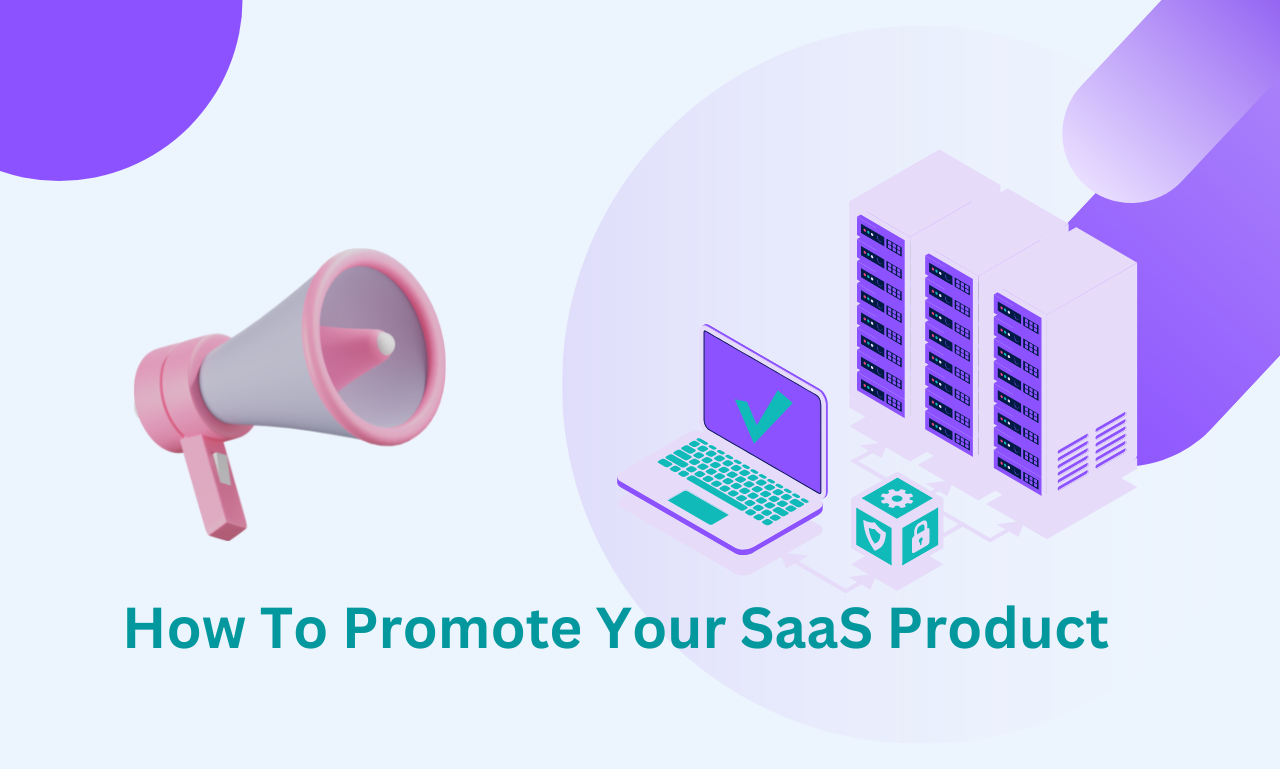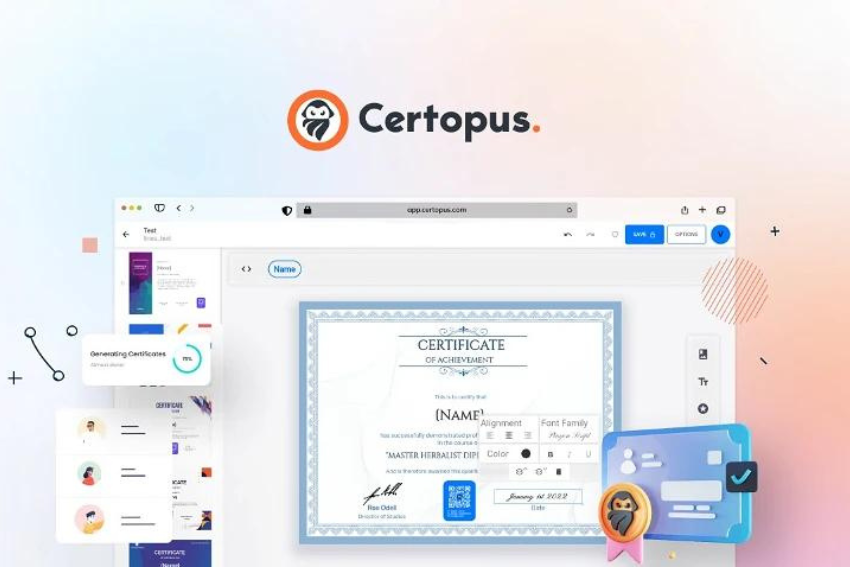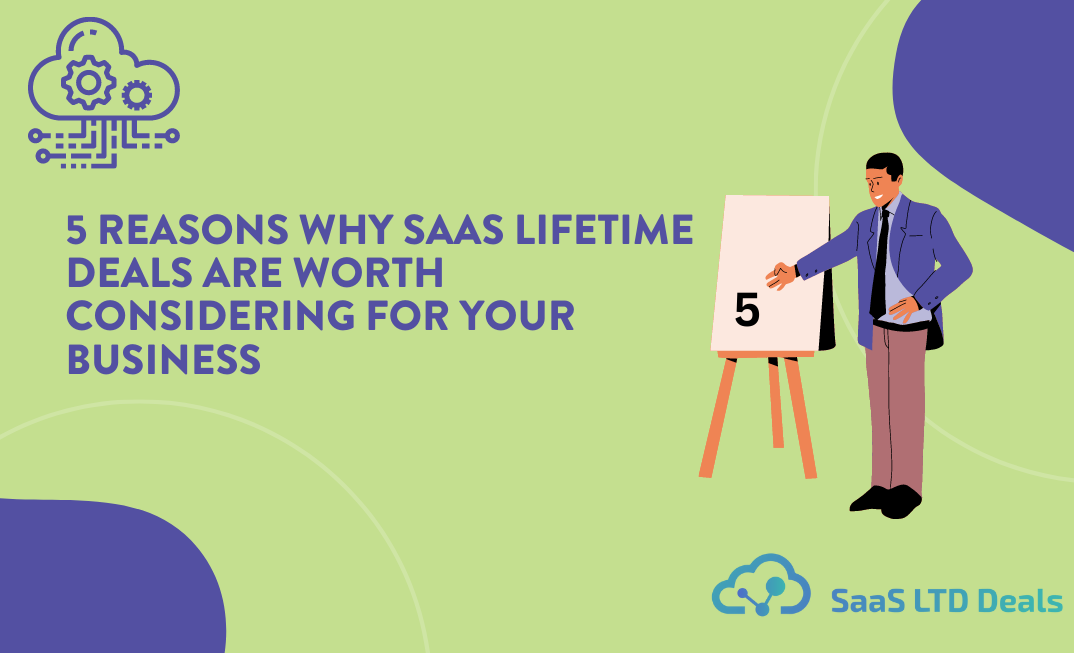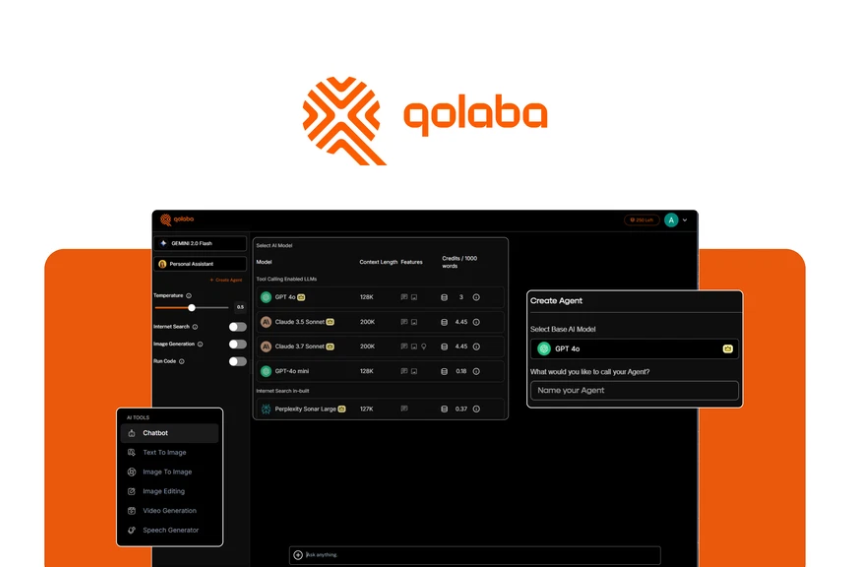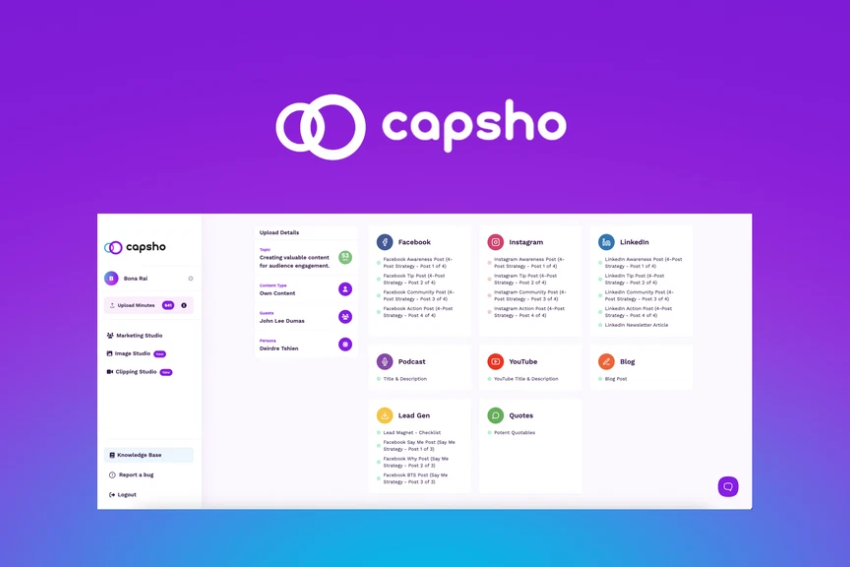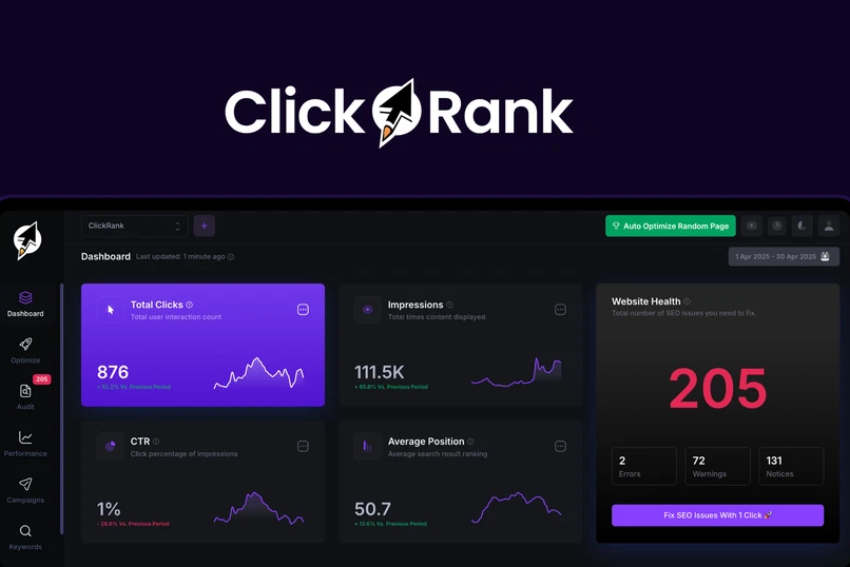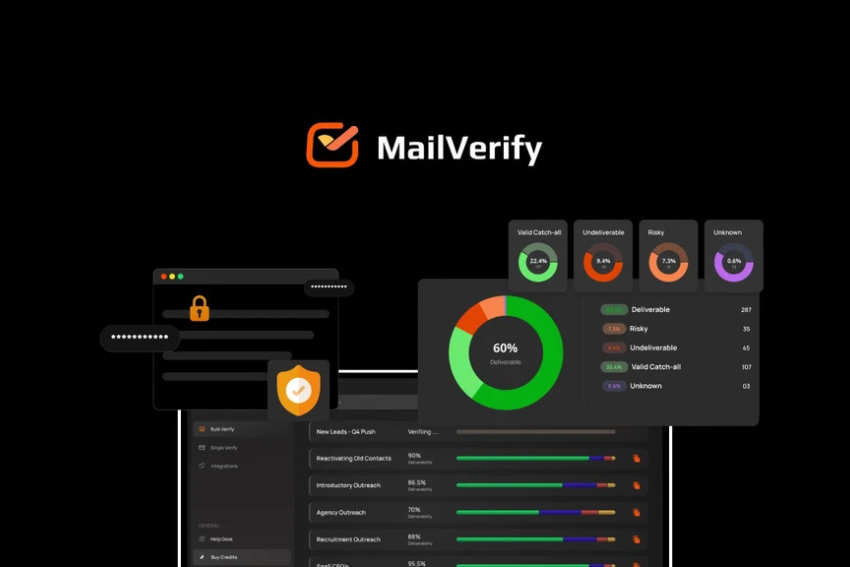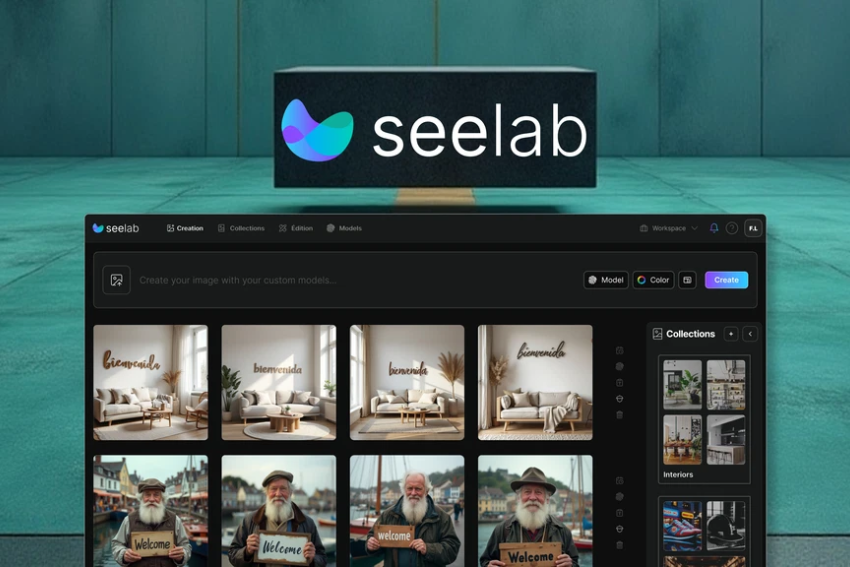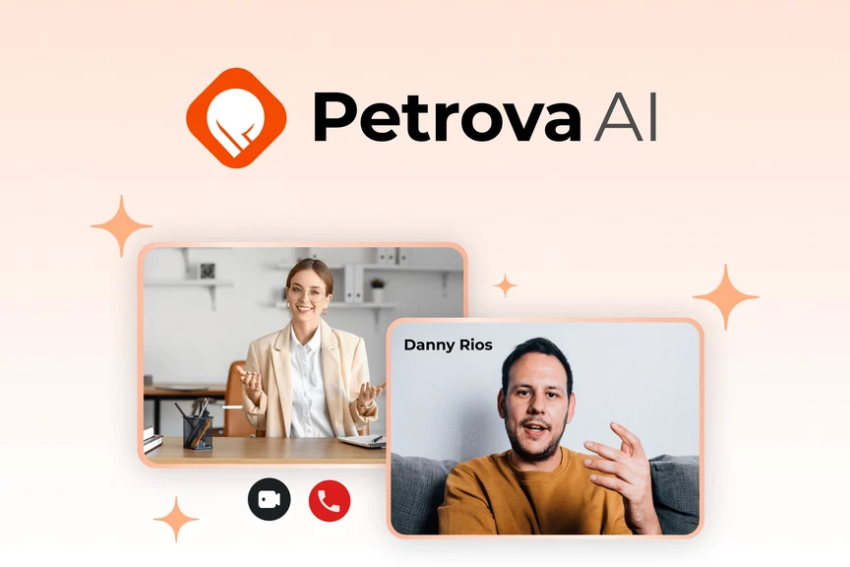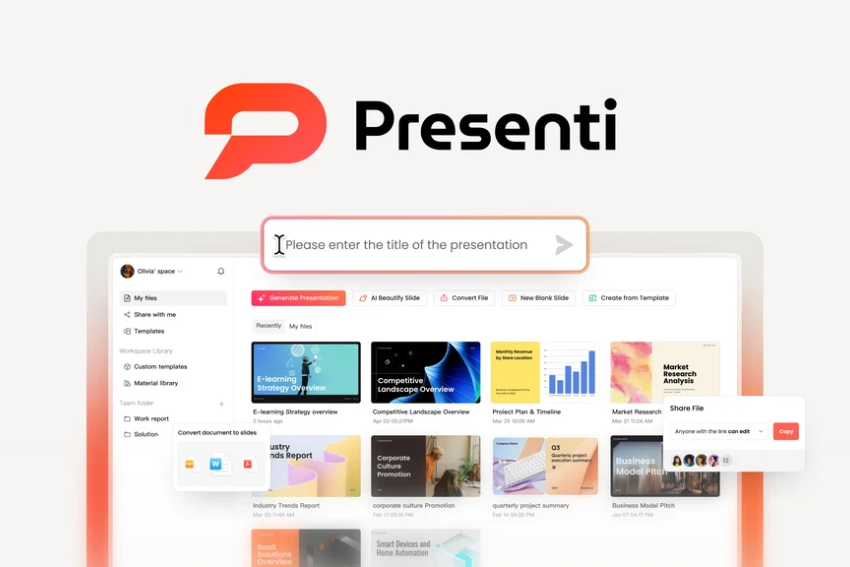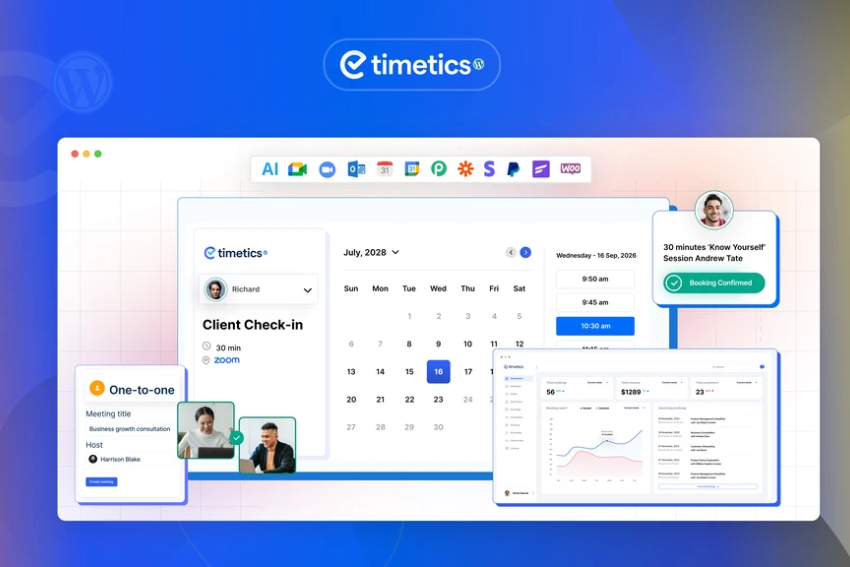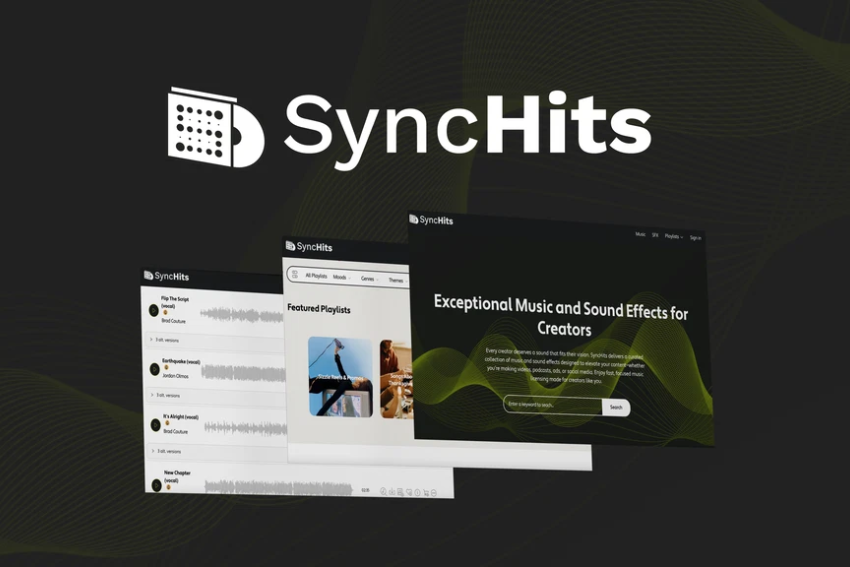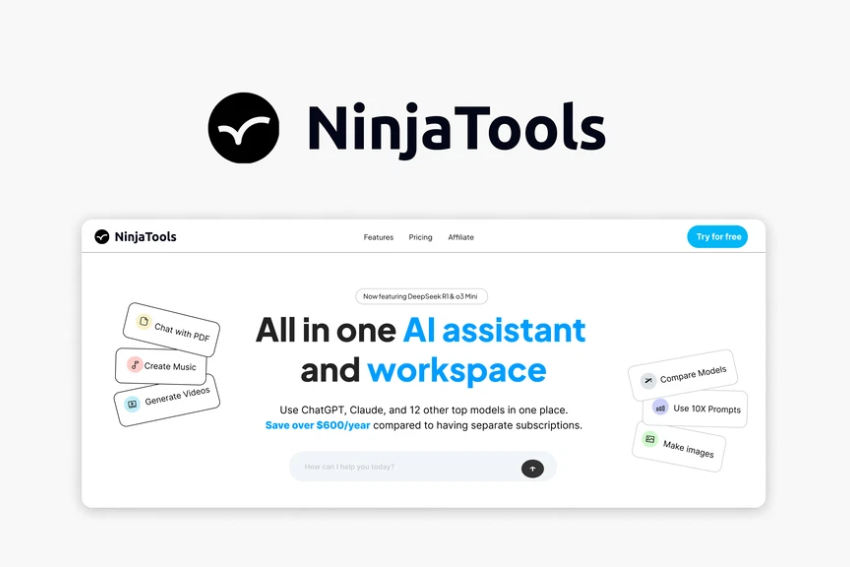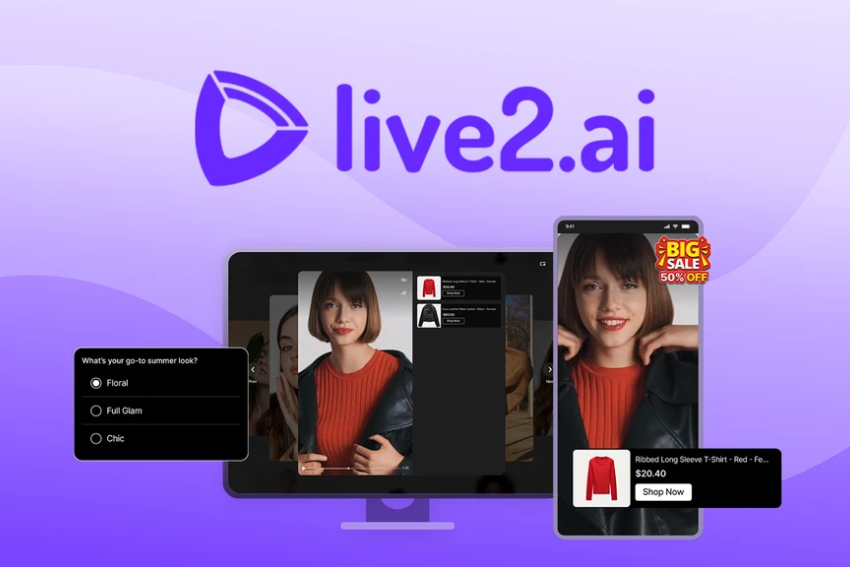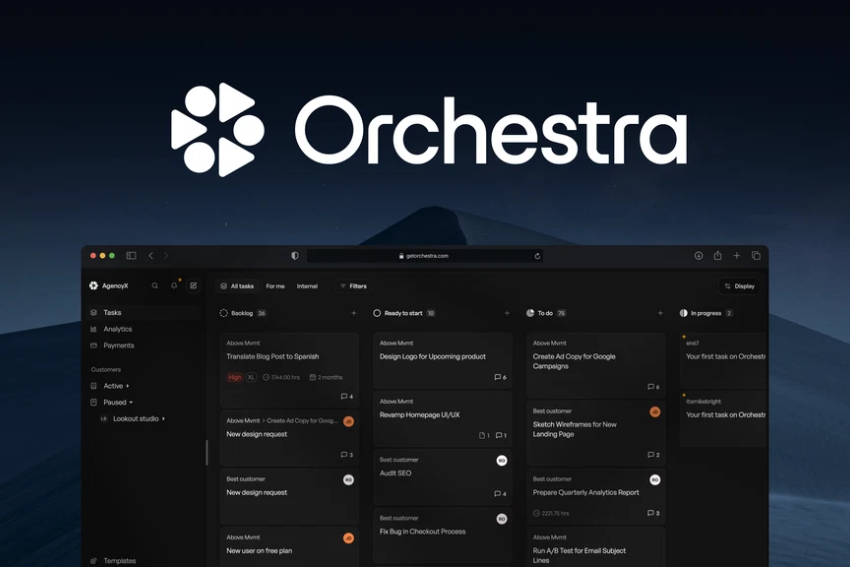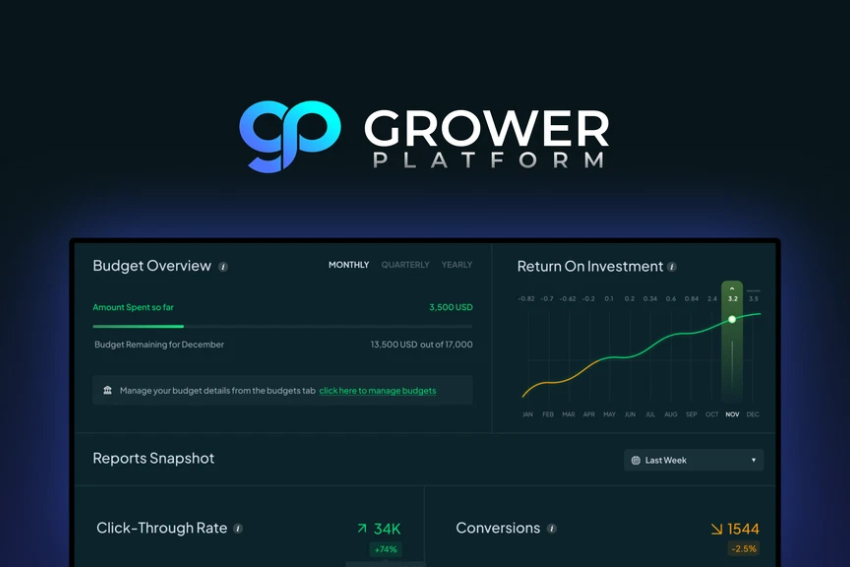In today’s digital landscape, promoting your SaaS (Software as a Service) product has become more critical than ever. With many options available, it’s crucial to stand out and ensure the right audience sees your product.
In this blog, we’ll explore some effective strategies for promoting your SaaS product and attracting new users.
From leveraging social media to building a solid online presence, we’ll cover the essential steps you need to take to get your product in front of the right people. To be competitive in the SaaS market, you need an effective marketing strategy. Here are the best SaaS marketing strategies to know how to promote your SaaS product.
What Is SaaS Product Marketing/Promotion?
SaaS, or software-as-a-service, delivers software applications over the internet, usually on a subscription basis. This cloud-based service has become increasingly popular over the past few years, as businesses of all sizes have found it to be an efficient, cost-effective way to access the latest software technologies.
But having the right software in place isn’t enough – it also needs to be promoted and marketed effectively to ensure its success. SaaS promotion is a specialized form of marketing, with specific strategies and tactics tailored to the unique needs of SaaS businesses.
At its most basic level, SaaS marketing combines awareness-building with sales-focused activities.
Awareness activities consist of creating content and campaigns that get the word out and attract potential SaaS customers. A few examples are blog posts, social media campaigns, email campaigns, and pay-per-click ads.
Sales activities are more focused on converting potential customers into paying customers by providing them with product demos and trials, as well as positioning your product as the best solution for their needs.
Another key part of SaaS promotion is customer retention – that is, keeping customers satisfied and engaged so that they continue to use and pay for your product. This may include sending out regular emails to customers, offering discounts or rewards for referrals, and providing helpful customer support.
SaaS marketing also relies on gathering data and using it to improve your product or service and optimize your marketing efforts. Based on this data, you can determine how to reach potential customers, how to price products, and how to make content marketing more effective.
Things To Keep In Mind Before Implementing Effective SaaS Marketing Strategies
Prior to implementing SaaS marketing strategies, there are a few things to consider. Here are those:
1. Define your target audience.
The first step in any successful marketing strategy is to identify your target audience. The more you comprehend your target audience, the better you can tailor your message and create promotions that will appeal to them.
It’s important to understand the needs, habits, and purchasing power of your target audience, so you can create promotions that are tailored to their interests.
2. Understand the benefits of your SaaS product.
Before you start promoting your SaaS product, you need to understand the benefits it provides and how it can help your target audience.
With a clear understanding of what your product offers, you’ll be able to create marketing messaging that resonates with your audience and gets them interested in your product.
3. Determine your promotion budget.
Having a budget will help you plan your promotion strategy, as well as determine which promotion channels to focus on. Knowing exactly how much you have to spend on promotions will also help you create promotions that are cost-effective, and that can generate the most return on investment.
4. Utilize multiple promotion channels.
When it comes to promoting SaaS products, you need to utilize multiple promotion channels to reach the widest possible audience. This includes both traditional and digital promotion channels such as email, social media, paid search, and display.
Using multiple channels will allow you to reach a broader audience and capture more market share.
5. Analyze and track your results.
To ensure that your SaaS product promotion strategies are successful, track and analyze the results. Consequently, you can identify the channels that are producing the best results and adjust your strategy accordingly.
This will help you maximize your return on investment and ensure that your promotions are successful.
Best Ways To Know How To Promote Your SaaS Products
Looking for ways to promote your SaaS products?
It can be challenging to pinpoint the best ways to reach potential customers. Fortunately, you can employ a variety of strategies to effectively promote your SaaS products.
In this post, we’ll discuss some of the best tactics for driving more awareness and engagement around your software platform. Keep reading to find out more!
1. Utilize Influencers And Partnerships
With so many social media platforms available, choosing the right one can be hard. However, if you use influencers and partnerships effectively, you will be able to reach more people.
Leveraging influencers is a great place to start. Influencers are people who are highly credible in their field, and they typically have a large following on social media.
By working with such people, you’ll be able to reach a broader audience than on your own. This can help promote your product in a more credible way and increase sales potential in the process.
Partnerships are another effective method for expanding your reach and increasing your credibility. You can co-market and co-promote your products together with partners.
The result will be a stronger bond between the two of you, and a greater number of users will gain awareness of your product.
Partnerships also allow for increased organic reach – meaning that users will see your content without any paid advertising involved.
2. Make Use Of SEO
Search engine optimization (SEO) refers to the technique for improving a website’s search engine visibility. When your website is optimized for search engines, it will appear higher up on search engine results pages, giving your SaaS product more exposure.
SEO can be a complex process, but here are some tips to get you started:
● Research relevant keywords.
Research relevant keywords to target your website’s content. This includes keywords that describe your product, as well as those related to your industry.
● Optimize your content.
Make sure your content is well-written, relevant, and optimized for keywords. You should use appropriate keywords in your page titles, meta descriptions, and body text.
If you don’t want to spend a lot of time writing, use an AI-based writing tool.
● Focus on link building.
Link building plays a crucial role in SEO, as it improves your website’s ranking. Try to get as many quality links pointing to your website as possible from other websites, blogs, and social media.
● Develop a blog.
Having a blog on your website is a great way to create fresh content and gain more exposure for your product. Try to post content regularly and make sure it’s optimized for keywords.
● Utilize social media.
The use of social media can significantly increase the reach of your product. Post regularly and use relevant hashtags and content to draw attention to your business.
3. Invest In Paid Advertising
The key to successful paid advertising is to know your target audience, research the right channels, and craft effective campaigns. With a well-thought-out paid advertising strategy, you can maximize your budget and get the most out of your marketing campaigns.
Before you begin creating your campaigns, identify your potential customers. Define your ideal customer profile, including age, income level, interests, and other demographic information.
All of this helps you decide which types of ads to run and where to run them.
Once you know your target audience, it’s time to research the best channels for your campaigns. Consider channels like search engines, social media, and display networks.
These channels all come with different advantages and drawbacks, so consider which ones fit your budget and target audience.
The next step is to design effective campaigns based on the channels you’ve chosen. Focus on crafting ad copy that speaks to your target audience and offers them a solution to their problem. Consider using A/B testing to determine which ads have the best performance.
Last but not least, you should always set a budget for each campaign and monitor its success.
4. Provide Free Trials
Free trials engage potential customers, demonstrate the value of your product, and convert them to paying customers.
Free trials should be long enough to give potential customers a chance to evaluate your product yet short enough to encourage them to upgrade. Make sure you clearly explain the free trial’s features, benefits, and restrictions.
Once the free demo is set up, promote it through email campaigns, blog posts, social media posts, and paid advertising. Add calls-to-action that encourage potential customers to sign up for the trial.
You should also make sure that your product and your website are easy to use as you promote it.
In case anyone has questions or difficulties using the product, they should be able to contact customer service.
5. Prepare A Content Strategy
A comprehensive content plan should include an overview of the promotion’s goals, objectives, and strategies. To do so, you must know who the target audience is and what type of content they prefer, as well as how to promote the product effectively.
Remember that you need to create content that resonates with your intended audience. This could be accomplished by creating informative articles such as tutorials, how-to guides, and case studies, as well as other engaging and entertaining content.
In every piece of content you create, incorporate keywords related to your SaaS product. This way, you will achieve the best results through your articles.
As you create content, keep these things in mind:
- Produce blog posts based on a customer’s feedback or experience
- Create a video or webinar discussing industry trends
- Provide visitors with helpful tips and strategies in an ebook
- Use case studies or interviews to highlight customer successes
- Develop an infographic that explains a topic’s results or trends
6. Consider Using Video Marketing
With the rise of video content, there is a huge opportunity for B2B businesses to engage their audience through visuals. Video marketing can be an effective means for businesses to reach potential customers, generate leads, and drive more sales.
When creating video content for your SaaS product, aim to create engaging and informative clips.
For example, making demo videos is an excellent way to promote your SaaS product. They demonstrate the value of your service to customers and give them an idea of how it works.
In the video, you can highlight the features of your product, such as lifetime deals or other discounts. It must be high-quality and professional in order to boost the credibility of your brand.
You can use social media platforms such as YouTube, Vimeo, and Facebook to promote video content. Since these networks have high engagement rates, your videos will be more likely to be seen and shared.
In addition, you should optimize your videos with SEO-friendly titles, descriptions, and tags.
7. Be Clear In Your CTAs
Concise, clear, and specific is the key to a good call to action. You don’t want to confuse users or overwhelm them with too much information.
Thus, your CTA should be easy to understand and clearly states what action you are asking them to take. Furthermore, it needs to be visually appealing and distinct from the rest of the page.
It’s also important to create a sense of urgency in your CTA. You can do this by including a deadline or limited-time offer. This will encourage users to take the desired action before the opportunity passes.
Aside from the text of the CTA, the placement has to also be considered. Make sure it’s prominent and visible but not intrusive. You want to capture the visitors’ attention without distracting them from the main content.
8. Put The Price In Plain Sight
Pricing is a critical part of promoting your SaaS product. The price of your product should be clearly displayed so that potential customers will be able to decide whether to purchase it.
When showing the cost of your SaaS product, be honest and upfront with it. Avoid ambiguous pricing and include all fees and additional charges in the total price.
In this way, any confusion or misunderstandings will be avoided, and customers will know exactly what they are paying for.
Along with the purchase cost, clearly list any additional features, services, and upgrades that are part of the package. In doing so, potential buyers will be able to comprehend the full scope of the product and can be encouraged to purchase it.
Provide a link to a pricing page or detailed chart to help customers better understand the cost structure. Consequently, they are able to compare your product to others in the same category.
9. Obtain Feedback From Users
Generating positive reviews can be an incredibly powerful way to promote your SaaS product. After all, in the digital age, word-of-mouth recommendations are more important than ever.
People trust other people’s opinions, so having lots of positive feedback can be extremely beneficial for your business.
The first step to getting positive reviews is to ensure that your product is delivering great customer experiences. You must meet and exceed the value you promised.
You can then ask your customers for feedback when the time is right. There are a few ways to do this.
You can set up a page on your website where customers can easily leave feedback, or you can use third-party review sites like Capterra to collect reviews from customers.
It is also possible to send out surveys to customers to ask for their feedback directly.
Once you have the reviews, reply to them as soon as possible. It demonstrates that you care about your customer’s feedback and will help generate even more positive reviews.
You may use these reviews for product promotion. For instance, share them on your website and on your social media accounts. Use them in emails to potential customers and include them in your marketing materials.
By doing this, you can convince potential customers to choose you over your competitors.
10. Enhance Customer Experience
Improving user experience has been proven to be a powerful means of promoting SaaS products. As customers become increasingly tech-savvy and their expectations for convenience and ease of use grow, your product must meet their needs.
Here are some tips for improving user experience and making sign-ups easy for your SaaS product:
First, create a quick and easy sign-up process. It needs to be as intuitive and straightforward as possible, so users don’t have to waste time figuring it out.
Consider offering the option to sign up via social media sites like Facebook and Twitter, so users can quickly and easily get started.
Second, provide a detailed onboarding process. Make sure that users are aware of all the features your product offers and how to use them.
Offer detailed tutorials and walkthroughs to help users get up to speed quickly.
Third, ensure that your product is available on a variety of devices and platforms. In this way, you can reach a wider audience and make it easier for users to access your product.
For example, you can provide an app version for mobile users as well as a desktop version for PC and laptop users.
11. Analyze Competitive Landscape
When you’re promoting your SaaS product, it’s critical to understand the competitive landscape and performance of each player in the space.
Evaluate the competition by studying their pricing models, go-to-market strategies, digital marketing campaigns and product features. The more you know about your competitors and how they are positioning themselves in the market, the better equipped you are to come up with a strategy that sets you apart.
Moreover, consider creating personas for each target customer segment as this will help build a clearer picture of who is most likely to use your product and why.
Personas should have demographic details (such as age range and job title) alongside psychographic information (such as interests and technical preferences).
12. Develop A Referral Program That Encourages Customers To Refer You
Referral programs help to shape the perception of your customers about your product’s value, which may further increase brand engagement. They also enable you to expand your customer base by growing existing relationships and creating new ones.
When developing your referral program, consider what would most motivate customers to refer to your product – whether it is discounts or prizes for new referrals – and make sure it is easy for them to recommend it through social media or email. Designing an enticing referral program can help you establish trust among potential customers, grow brand loyalty and attract more leads.
The following are practical steps towards developing a successful referral system:
● Understand Your Customers
First, you need to determine who your target audiences are and what incentives they would find useful in referring to your product or service.
● Select Prices And Discounts
Decide which incentives would serve best in attracting more referrals while still being manageable within budget constraints. Possible rewards include discounts on products/services, special giveaways and loyalty points that translate into desirable rewards when accumulated up over time.
● Set Referees And Qualifiers Parameters
Establish qualifying criteria for the participants, such as purchase history and provide winners with suitable prizes at the end of each period that motivates people to participate in referring programs over a long term basis.
● Create Easy-to-Share Links And Tools
Generate social media optimized URLs that track referrals using unique identifiers for multiple distribution channels like linkedin, twitter etc., as well as buttons like “tweet this” that encourage sharing or even widgets; for easy access on desktop devices.
● Audience Analysis And Performance Tracking
Lastly, analyze data from each channel tracking referral performance usage appropriately by tracking clicks, conversions etc., so as to understand which reward model works well with respective audience segments.
What Makes SaaS Marketing Different?
Here are a few ways that SaaS marketing differs from other forms of digital marketing:
1. Long-Term Focus
SaaS marketers tend to focus on long-term relationships with customers. They are more concerned with retention than acquisition.
Instead of just trying to get as many users as possible, SaaS marketers use tactics like content marketing, email campaigns, and webinars to build relationships with existing and potential customers over time.
2. Personalization
SaaS promotion is particularly effective when it comes to personalizing experiences. Since the software is often tailored to meet specific needs, customized messages and experiences are much more effective than generic ones.
Personalized emails, targeted landing pages, and tailored onboarding experiences all help to build an effective customer relationship.
3. Automation
Automation is key to successful SaaS marketing and promotion.
Automated tools can help to trigger emails, post updates, and keep track of customer data. This allows SaaS marketers to focus on creating great content and engaging with customers rather than managing the minutiae of marketing.
4. Relationship Building
SaaS marketing focuses on creating relationships with customers and potential customers. This includes providing helpful content, responding to customer questions, and offering value-added services.
All of these tactics help to build trust and loyalty with customers.
5. Cross-Platform Strategies
Various platforms are effective for SaaS marketing. In addition to email marketing, social media advertising is also included in this category.
By using a mix of tactics, SaaS vendors can reach a wide audience and build relationships with customers across different channels.
What Are The Best Channels For SaaS Promotion?
There are some SaaS marketing channels that are generally considered to be more effective than others. In this section, we’ll take a look at those channels.
1. Affiliate Marketing
Affiliate marketing allows you to leverage the reach of other websites and companies in order to gain the attention of potential customers. This involves partnering with other websites or companies who will promote your product or service on their website in exchange for a commission.
It can be a very effective strategy for reaching a large number of people and driving traffic to your website.
2. Email Marketing
Email marketing is another great channel for SaaS marketing. It gives you the opportunity to reach out directly to potential customers and offer them personalized offers.
You can create campaigns that are tailored to specific customer segments and track customer engagement with your emails. It’s also possible to send newsletters, special offers, and announcements to the contacts on your email list.
3. Social Media
Social media allows for easy sharing of content and engagement with potential customers. By creating interesting content and sharing it on social media, you can build an audience and create relationships with potential customers.
You can also use social media to share special offers and discounts.
4. Search Engine Optimization
Search engine optimization (SEO) is a key component of any SaaS marketing strategy. Your website and content can be optimized for search engines so that your customers can find your product or service easier.
This will lead to more organic traffic for your site, which can then be converted into leads and sales.
These are just some of the best channels for SaaS marketing. Each of these offers unique advantages, so it’s important to assess which ones will work best for your business.
Why Is It Important For SaaS Companies To Invest In Online Presence?
In today’s highly competitive market, having a strong online presence can give SaaS companies a competitive edge. It provides an opportunity to reach a larger audience, build relationships with potential customers, and showcase their services.
Furthermore, it helps distinguish a business from the competition and makes it stand out.
Having an active presence also makes it easier to establish trust with potential customers. They can easily visit a SaaS company’s website to learn more about its products and services.
This will foster a sense of trust and confidence in the customer, resulting in increased sales and customer satisfaction.
SaaS companies can also use their online presence to spread brand awareness. This can be done by creating content, engaging with customers on social media, and running campaigns or promotions.
And finally, SaaS businesses can increase sales by going online. They are able to create targeted ads, drive traffic to their websites, and optimize their pages for better search engine visibility.
Also Read: A Beginner’s Guide to Finding and Choosing the Right SaaS Lifetime Deal
Frequently Asked Questions
1. What are the top 3 marketing SaaS tools for a startup?
For a startup, the top 3 SaaS marketing tools are Hootsuite, Google Analytics, and Salesforce. Google Analytics tracks website performance, providing information about traffic sources, visitor behavior, and trends.
On the other hand, Hootsuite helps manage social media accounts. Lastly, Salesforce has the capability of automating marketing and tracking leads.
2. What are some examples of SaaS?
There are many famous SaaS products out there, such as Dropbox, Google Workspace, Cisco WebEx, Salesforce, MailChimp, etc.
3. How do I get my first 100 customers as a SaaS company?
SaaS companies should focus on relationship building and marketing to get their first 100 customers. Using email, social media, blogs, and other online channels to reach out to potential customers.
Free trials and discounts are available to those interested in your product, and you should be willing to answer any questions they may have.
4. What are the top 3 key SaaS marketing metrics to track?
The top 3 key SaaS marketing metrics to track are:
1. Customer Acquisition Cost (CAC): This measures all costs associated with acquiring a new customer.
2. Customer Lifetime Value (CLV): This measures the value of each customer over the course of their lifetime.
3. Revenue per Customer (RPC): This metric indicates how much revenue each customer generates.
5. How do you engage customers with SaaS?
One way to engage customers with SaaS is to offer personalized customer experiences. You can do this by offering personalized content and promotions, customizing onboarding experiences, and integrating your customers’ data with your products.
Conclusion
In the end, promoting your SaaS product requires a combination of various strategies and a continuous effort to reach your target audience. With the right approach, you can establish a strong online presence, generate leads, and ultimately drive sales.
By keeping the guidelines mentioned in the article in mind, you can take your SaaS product to the next level and make it stand out in the crowded digital marketplace.


